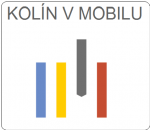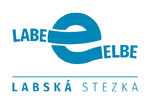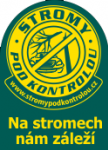I. From the synagogue to the cemetery
When walking through Kolín we will visit several places of interest.
The starting point of our tour will be the street Na Hradbách where the information centre is located. The whole street used to be a part of the Jewish ghetto which can be proved by many Jewish houses. We will go through a part of Pražská street and we will find ourselves in the Square of Republic which is nowadays used especially as a junction of the town public transport.
From this place you can go to nearby Sokolská street (where kolín chateau is situated) has been undergoing a gradual reconstruction. There you can find several town office departments; the yard is used as a parking place.
The history of the whole complex is very long and rich. In this place there used to be a Dominican monastery which was burnt out in 1421 during the Hussite wars. It was probably the regional county representative and priest Bedřich from Strážnice who started building a stone castle here which he called Lapis refugii (The stone of refuge).
In 15th century this quite small castle became the property of Bohemian royal chamber, however it was often in hands of pledge holders.
The main significance for the whole area was the activity of Žerotín family in the second half of 16th century. During this period the place was rebuilt into a renaissance chateau. In 1591 the property was bought back by emperor Rudolf II., the chateau lost the function of an aristocratic residence and it was used only as an administrative building and partly as a brewery. The production of beer increased in the second half of 19th century when the owner was František the knight Horský from Horskýfeld.
Sokolská street continues further along the building of Primary Art School to the building Sokolovna (gymnasium). Right next to this building we can find the gate leading to the old Jewish cemetery. It is believed to be one of the oldest ones in Bohemia. On the area of approximately one hectare there are more than 2 600 gravestones which describe the development of Jewish funeral architecture from 15th to the second half of 19th century.
Author: David Bárta
























 Máte zájem dostávat nejnovější zprávy přímo do vaší e-mailové schránky?
Máte zájem dostávat nejnovější zprávy přímo do vaší e-mailové schránky?